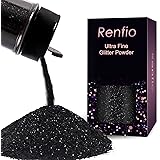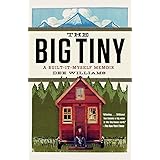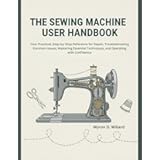Unlocking Efficiency: Clever Cleaning Hacks to Speed Up Your Routine
Are you constantly seeking ways to make household chores less of a burden and more of a breeze? Does the thought of tackling stubborn stains and persistent clogs fill you with dread? If so, you’re in the right place, as the video above has already offered a glimpse into a world of simple yet effective cleaning hacks.
This article aims to further elaborate on many of these smart household tips, providing additional context and insights into how these everyday items can be leveraged for maximum cleaning power. By integrating these strategies, significant time and effort are often saved, contributing to a more efficient home cleaning routine.
Conquering Common Cleaning Challenges with DIY Solutions
Many common household issues, from persistent clogs to unsightly scuffs, can be addressed with surprisingly simple solutions found right in your pantry or medicine cabinet. A proactive approach to these challenges can prevent them from escalating into more significant problems.
1. Tackling Clogged Toilets and Drains Effectively
A clogged toilet or drain is undoubtedly one of the most frustrating household nuisances. While the video quickly showed a plastic wrap method for toilets and a soda, vinegar, and hot water mix for drains, understanding the principles behind these DIY cleaning solutions can prove beneficial.
- For Clogged Toilets: The plastic wrap film technique functions by creating an airtight seal over the toilet bowl. This seal allows for a build-up of pressure when the toilet is flushed, which is then used to force the obstruction through. By pushing down on the center of the stretched film, a powerful vacuum effect is often generated.
- For Clogged Drains: The combination of soda (like Coca-Cola, not baking soda here), vinegar, and hot water is a popular method for drain cleaning. The phosphoric acid in soda, when combined with vinegar, can help to dissolve grease and grime. Subsequently, the hot water assists in flushing away the loosened debris. This method is generally considered safe for pipes, unlike harsh chemical drain cleaners.
2. Banishing Stubborn Stains from Various Surfaces
Stains are an inevitable part of living, but their removal does not always require specialized products. Several ingenious stain removal hacks can be employed using common household ingredients.
- Dirty Cookie Sheets: A baking soda and vinegar paste is often utilized for bringing heavily soiled cookie sheets back to life. The chemical reaction between baking soda (a base) and vinegar (an acid) produces fizzing, which helps to lift baked-on grease and food particles. Allowing this mixture to sit for approximately 5 minutes can be highly effective.
- Stained Mattresses: Mattress stains can be addressed with a mixture of baking soda, vinegar, and dish soap. Baking soda is known for its deodorizing and mild abrasive properties, while vinegar acts as a disinfectant and stain lifter. The dish soap aids in breaking down oils and grime. After application, it is crucial to allow the mixture to dry completely before vacuuming away the residue.
- Oil Stains: Although the video briefly mentions a method for oil stains, the exact ingredients were not specified. Often, cornstarch or baking soda can be applied to fresh oil stains on fabric or carpet to absorb the oil before it sets. After allowing it to sit, the powder is then vacuumed or brushed away, and the area can be treated with a mild detergent.
3. Restoring and Maintaining Surfaces
Beyond cleaning, maintaining the appearance and integrity of various surfaces is a key aspect of efficient home care. Everyday items can be repurposed for surprisingly effective maintenance tasks.
- Scuffed Walls: While the specific solution was not detailed in the video, scuffed walls are frequently cleaned with a magic eraser or a damp cloth moistened with a small amount of all-purpose cleaner. Gentle scrubbing is advised to avoid damaging the paint.
- Wood Floors: Hand cream, as briefly highlighted, can be surprisingly effective for wood floor care. Small scuffs or dull spots can sometimes be buffed out with a tiny amount of non-greasy hand cream, which helps to moisturize the wood and restore its sheen. It is always recommended to test on an inconspicuous area first.
- Removing Permanent Marker from Wood: This challenging task can often be remedied with a few common substances. Alcohol, nail polish remover (acetone), baking soda, and even toothpaste are all cited as potential solutions. Each works differently; alcohol and acetone act as solvents, while baking soda and toothpaste offer mild abrasive properties. Always test these powerful solvents in an unseen spot first.
- Removing Stickers and Adhesive Residue: Stubborn stickers and their sticky remnants can be quite frustrating. Oil (such as cooking oil) or WD-40 can be used to break down the adhesive. The oil penetrates and loosens the glue, allowing the sticker or residue to be peeled or wiped away more easily. Care should be taken when using WD-40 on certain surfaces.
Embracing Natural and Budget-Friendly Cleaning Alternatives
Many of the showcased natural cleaning methods align with a desire for more environmentally friendly and cost-effective home care. Using common pantry staples not only saves money but often reduces exposure to harsh chemicals.
1. Harnessing the Power of Baking Soda and Vinegar
The synergy between baking soda and vinegar is a cornerstone of many natural cleaning hacks. When these two substances are combined, a mild fizzing reaction occurs, which is instrumental in loosening dirt, deodorizing, and lifting stains.
This reaction makes them ideal for tasks like cleaning cookie sheets, as mentioned, and can also be used for refreshing drains or scrubbing bathroom fixtures. The gentle abrasive quality of baking soda, coupled with vinegar’s acidity, provides a powerful yet non-toxic duo for various efficient cleaning tasks.
2. Hydrogen Peroxide for Bacterial Cleaning
The video briefly notes hydrogen peroxide for “bacterial cleaning.” Hydrogen peroxide is a mild antiseptic and oxidizing agent that can effectively kill bacteria, viruses, and mold. It is often used as a disinfectant on surfaces, cutting boards, and even in laundry to brighten whites and remove stains.
When used for cleaning, a 3% solution is typically sufficient. It can be sprayed directly onto surfaces and left to sit for a few minutes before wiping clean. This makes it a valuable component of a healthy, clean home, contributing to a more hygienic environment.
3. Natural Odor Elimination
Unpleasant smells are often a sign that a space needs refreshing. The mention of cinnamon for dusty smells points towards using natural aromatics to improve indoor air quality. Placing cinnamon sticks or a few drops of cinnamon essential oil near dusty areas or in simmering water can naturally diffuse a pleasant scent throughout a room.
Beyond cinnamon, baking soda is an excellent natural deodorizer, capable of absorbing odors rather than just masking them. It can be sprinkled on carpets, upholstered furniture, or placed in open containers in fridges and closets to neutralize unwanted scents, making it an essential tool for an odor-free home.
Dollar Store Finds and ingenious hacks
The “1 Dollar Hacks” segment underscores the fact that effective cleaning does not necessitate expensive products. Many useful items can be sourced affordably, demonstrating that resourcefulness can significantly enhance your home cleaning solutions.
From simple sponges and brushes to versatile ingredients like hydrogen peroxide and baking soda, a well-stocked “dollar store” cleaning kit can be just as effective as a premium one. The key lies in understanding how to best deploy these budget-friendly items for maximum impact on your household cleaning tasks.







